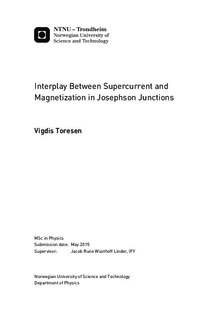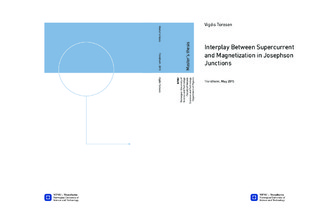| dc.description.abstract | The interplay between ferromagnetic and superconducting order in hybrid structures has in recent years attracted considerable interest
due to the rich quantum physics that emerges in such systems in addition to their potential application value in low-temperature spintronics.
In this thesis, we aim to investigate how spin-supercurrents and the magnetization configuration in ferromagnetic Josephson junctions interact with each other. This is done in the ballistic limit where one may construct wavefunctions that represent quasiparticle excitations and bound-states that may carry a supercurrent. Combining this with the Landau-Lifshitz-Gilbert equation, we find the contribution from the superconducting correlations to the effective field that determines the time-dependence of the magnetization. We first consider the scattering states for a domain wall ferromagnet in a Josephson junction. Then we consider a simpler model consisting of a ferromagnetic bilayer sandwiched by two superconductors. In the latter case, we show that the superconducting phase difference can be used to switch the magnetization orientation of the free layer. Our results suggest that it is possible to use superconductors to control the ground-state configuration of magnetic spin-valves, which in turn could lead to interesting magnetoresistance-like effects. | |

